Search Images
Browse Content (p. 509)
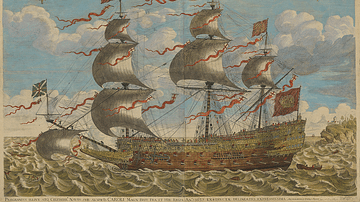
Image
The Sovereign of the Seas
A 17th-century hand-coloured engraving by John Payne of The Sovereign of the Seas, a ship built in 1637 during the reign of Charles I of England (r. 1625-1649). The ship was built using money from the controversial Ship Money tax. (National...

Image
Parthian Cataphract
A visualization of a Parthian cataphract (from the Greek word kataphraktos - fully armored) in action against the Roman military formation.
Artist: Simeon Netchev
Research, analysis, and inspiration: Patrick Scott Smith, M. A.
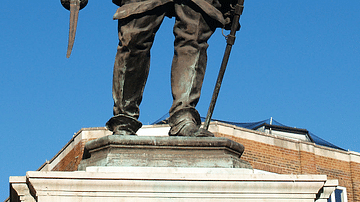
Image
Statue of John Hampden
A statue of John Hampden in Aylesbury, England. In 1637, Hampden famously challenged the legality of the Ship Money tax levied by Charles I of England (r. 1625-1649). Hampden lost the case but it raised important legal questions regarding...
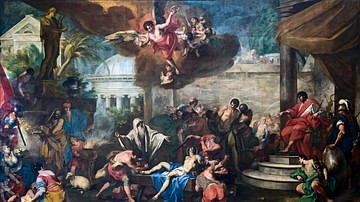
Image
Martyrdom of Saints Cosmas and Damian
Martyrdom of Saints Cosmas and Damian, oil on canvas painting by Antonio Balestra, 1718.
Abbey of Santa Giustina, Padua.
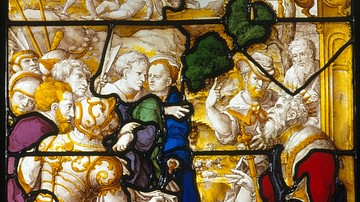
Image
Martyrdom of the Seven Maccabee Brothers and Their Mother
Martyrdom of the Seven Maccabee Brothers and Their Mother, stained glass by Dirck Vellert, Antwerp, c. 1530-35.
Metropolitan Museum of Art, New York.
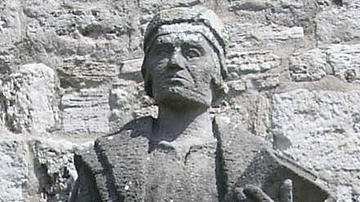
Image
Statue of Thomas Müntzer
A modern statue of Thomas Müntzer (l. c. 1489-1525), the German theologian and apocalyptic preacher who became one of the leaders of the German Peasants' War (1524-1525). Frauentor in Mühlhausen, Thüringen.

Image
Thomas Müntzer Commemorative Coin
A coin issued by East Germany in 1989 commemorating 500 years since the birth of Thomas Müntzer (l. c. 1489-1525), the German theologian and apocalyptic preacher who became one of the leaders of the German Peasants' War (1524-1525).

Image
Map of the Trojan Plain c. 1200 BCE
This map illustrates the battlefield of the Trojan War, as described in Homer’s Iliad and reconstructed through modern geological studies. Around 1200 BCE, the coastline near Troy looked very different, with the Aegean Sea reaching further...
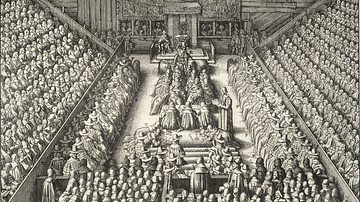
Image
Parliament's Trial of the Earl of Stafford
A 17th-century illustration showing the trial in Parliament of Thomas Wentworth, Earl of Stafford (1593-1641) in May 1641. Stafford was accused of plotting to raise an Irish army to invade England and support King Charles I of England (r...
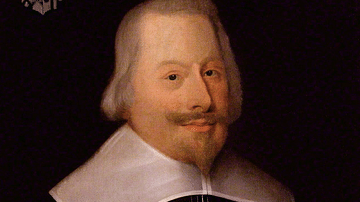
Image
John Pym
John Pym (1584-1643), a Member of Parliament and prominent opponent of King Charles I of England (r. 1625-1649) during the turbulent period which led to the English Civil Wars (1642-51). (National Portrait Gallery, London)